Autel may not be a household name in EV products, but its recent products are making a big push into home and commercial EV charging. The brand is more widely known for automotive diagnostic tools, but with the recent Autel Energy division, the company is releasing very competitive products like the Autel MaxiCharger. This product is available in several configurations: a 50-amp hardwired version, and two 40-amp plug-in versions featuring NEMA 14-50 or NEMA 6-50 wall plugs. In addition, the buyer has a choice between a SKU with an in-body J1772 holster or a charging station with an external holster.
Our Rating: 4.4/5
What we loved
- RFID card reader for security
- Well designed
- Easy to install
- Many plug types and variant options
What could be better
- Charging cord can get stiff in cold temperatures
- Scheduling is not very flexible
Unboxing and Installation
The MaxiCharger arrives in a retail packaging box, so it is visible what the product is from the outside. All of the components are safely secured inside the box with foam blocks, and it is a pleasant experience to open and prepare for installation.
Inside you will find the charging station with both the input and output cords pre-installed, as well as a sturdy metal wall mounting bracket, installation screws, and an instructional manual.
The mounting bracket is a solid metal piece with two vertical holes for installation. Drywall anchor screws are provided, but we would recommend these two screws be driven into solid wall studs rather than drywall. There are two horizontally arranged keyholes where the charging station box slots in from the top, and the bottom screw will secure the unit from sliding out. Note that the input cord is about a foot and a half long, and comes out the bottom of the unit.
Overall, this is a very simple home charging station to install by yourself, if you already have a NEMA 14-50 or 6-50 plug nearby. If you are planning a hardwired installation, consult with a licensed electrician.
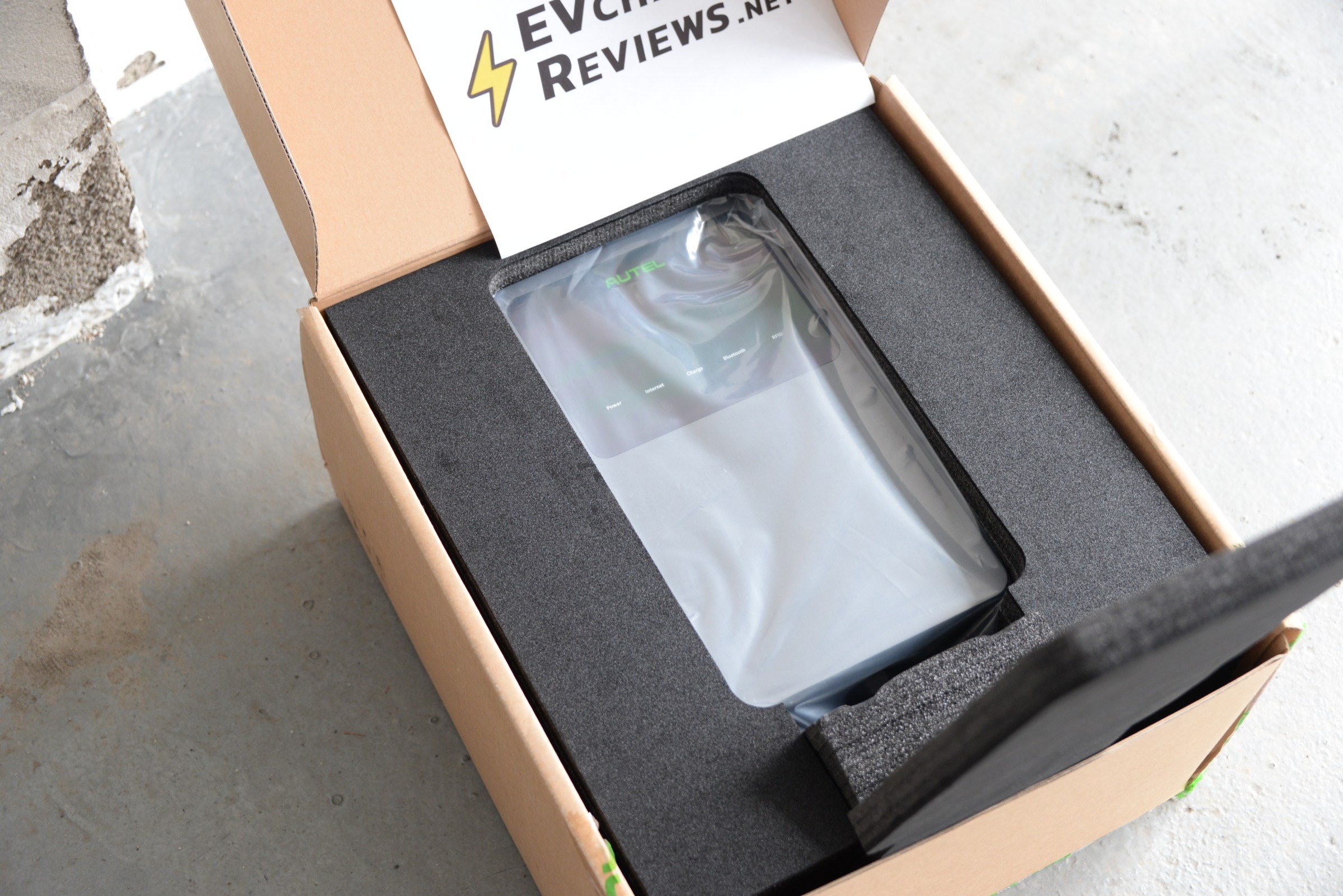
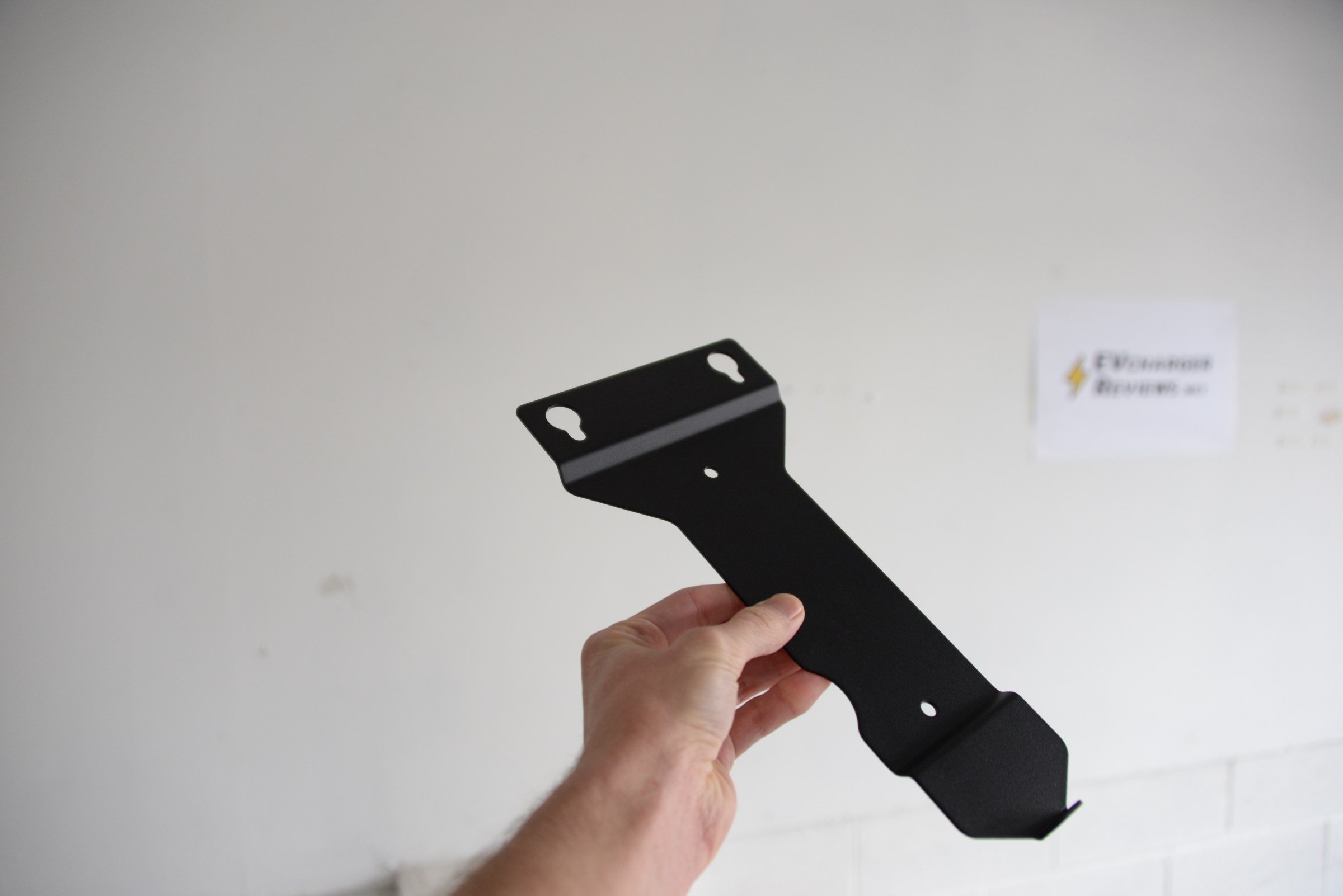
Hardware and Design
The enclosure of the MaxiCharger has a NEMA 4X rating, meaning it is suitable for outdoor installations. The unit and the cord should have no problem withstanding weather and the elements, but the MaxiCharger should not be installed in flood-prone locations.
The enclosure is made of plastic materials, but it does not at all feel cheap or flimsy. The top half of the unit has a glossy black square that looks like a screen. However, there are no displays on this charging station, just LED status indicator lights. If we had to guess the purpose of the black window, it is probably to let all of the radios send/receive signals better. The MaxiCharger includes Wi-Fi, Bluetooth, and RFID.
The Wi-Fi reception has been consistently great and reliable. Our Wi-Fi network is located about 40 feet away from the garage, on the inside of the home. We managed the charger remotely using the app without any connection dropouts.
Our unit came with an external J1772 holster that allows for the excess cord to be wrapped around it when the charger is not in use. There is another variation of the product where the holster is built into the main box, and the cord is wrapped around the charger. This is down to user preference because the charger stations are identical in other respects.
A key differentiator of the MaxiCharger is the implementation of an RFID card reader for security. This helps lock down the charger to prevent unauthorized charging, very helpful for outdoor and/or underground parking locations.
Some competing products include the RFID cards in the box with the charging station. Autel sells RFID cards separately but allows virtually any RFID card to be paired as a trigger using the app. We actually like this approach more, because it allows the user to add more cards and replace them if they are lost.
In our testing, we could pair a regular transit RFID card as a trigger for this unit. Even a Tesla keycard can be paired to the MaxiCharger as a key to unlock charging.
Specification Summary
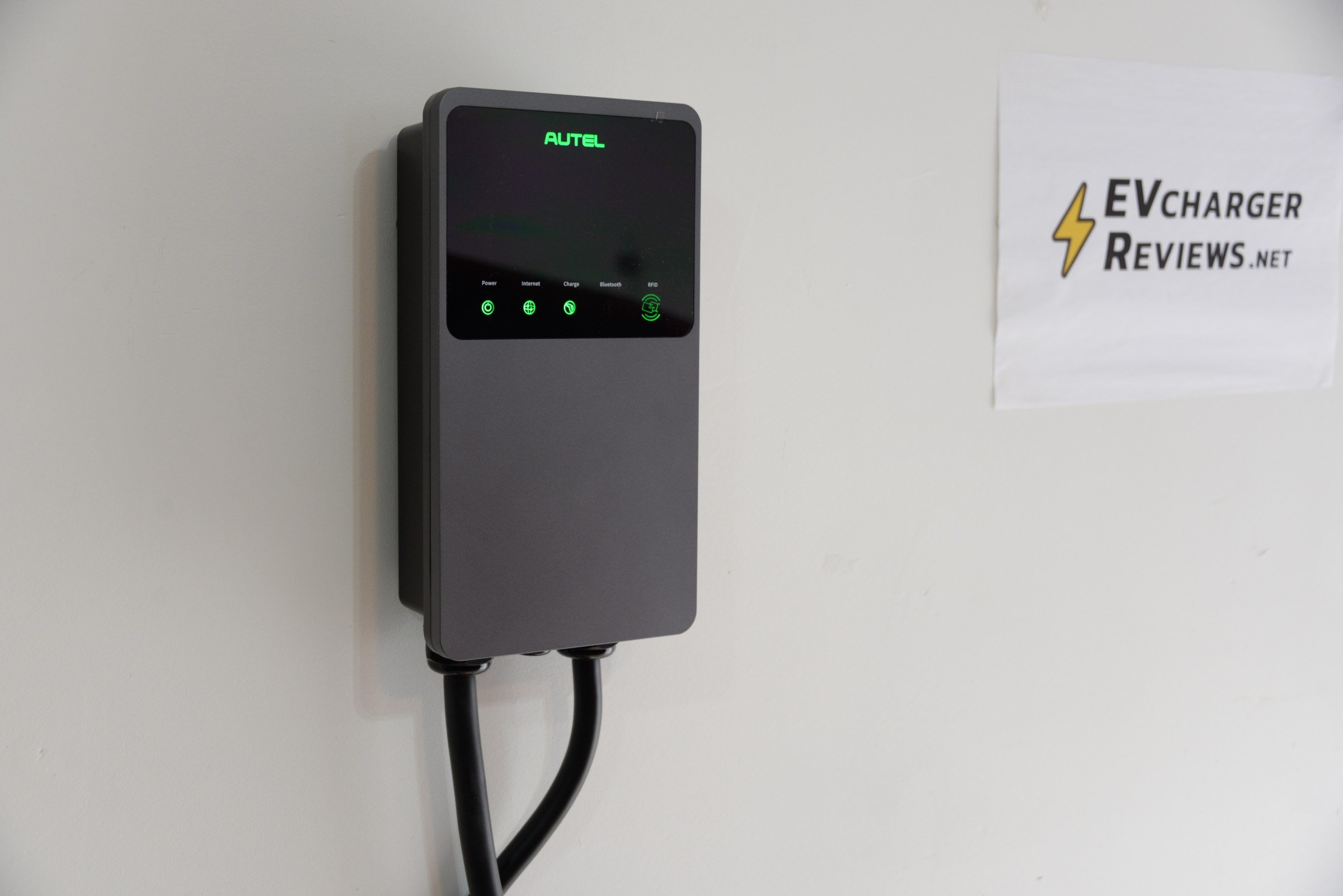
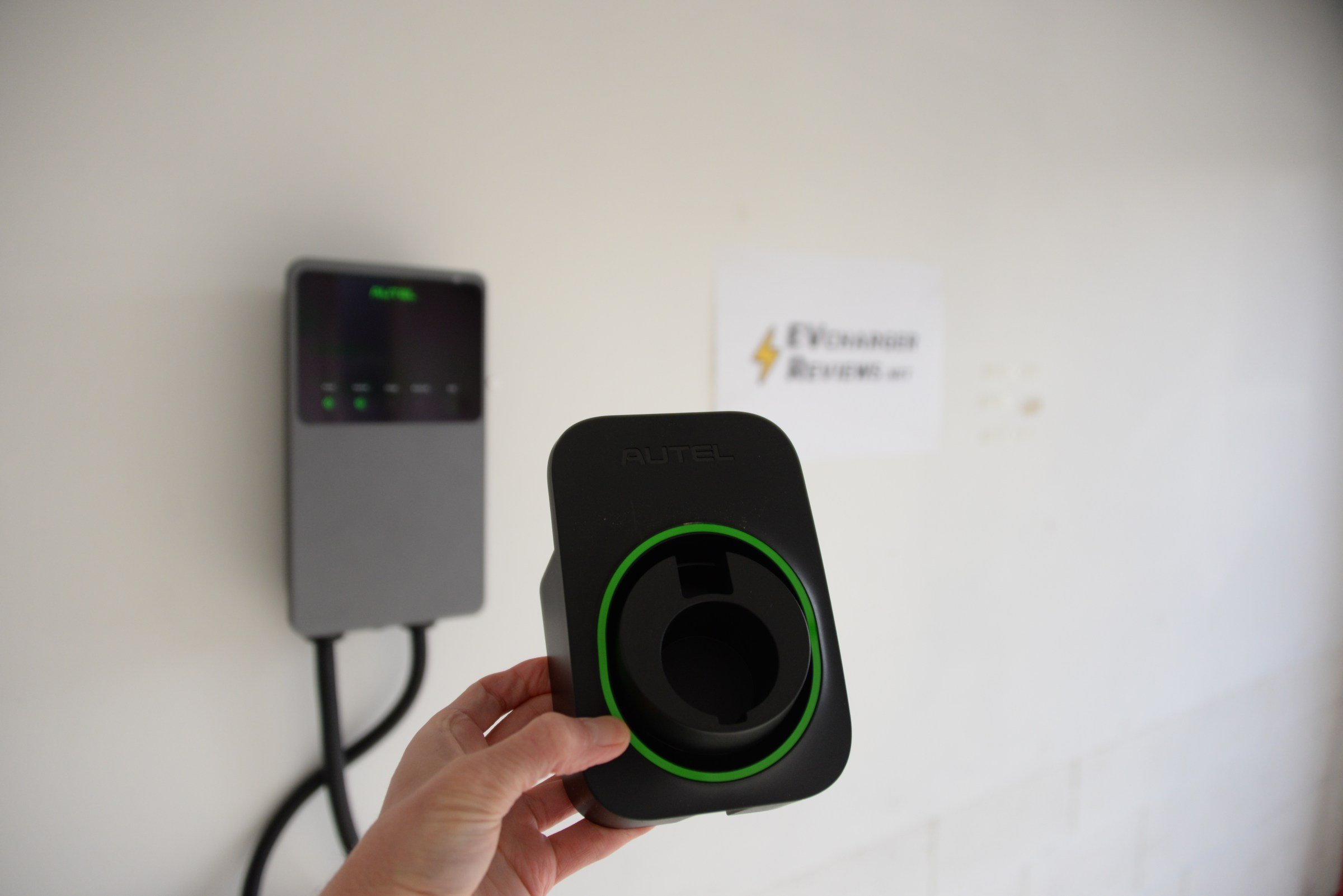
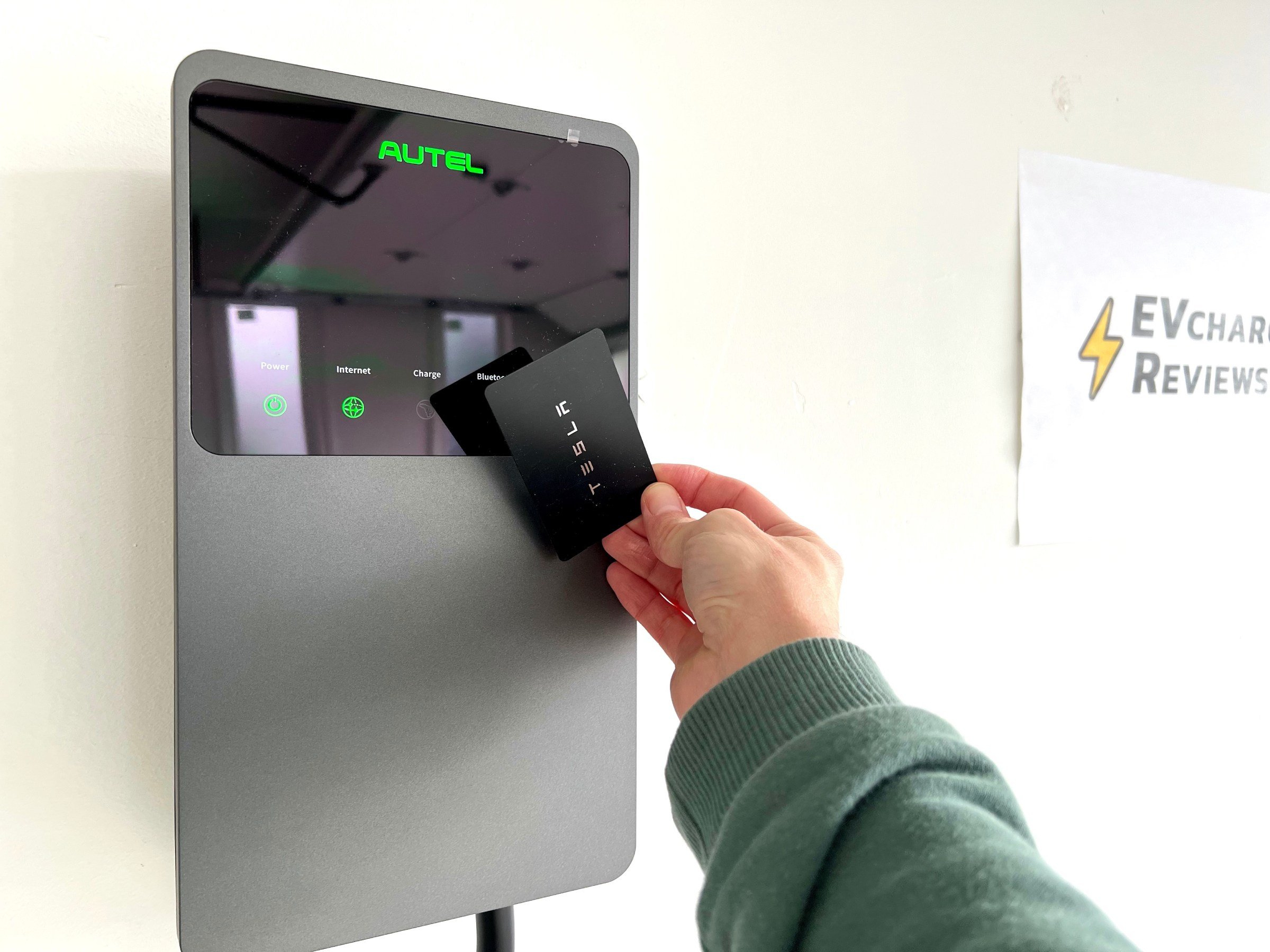
| Spec | Autel MaxiCharger |
| Charging Level | Level 2 (240v) |
| Max Amps | 50 amps hardwired, 40 with NEMA 14-50/6-50 plugs |
| Lowest Amp Setting | 6 Amps |
| Cord Length | 25 feet |
| Charging Connector | J1772 |
| Wall Connector | NEMA 14-50, or NEMA 6-50 |
| Connectivity | Wi-fi + App |
| Warranty | 3 years |
Charging Cord and J1772 Connector
The cord is thick but not overly heavy, it is relatively easy to handle despite the generous 25-foot length. It doesn’t get excessively warm even when pulling 40 amps for multiple hours.
Home charging stations need to have durable insulated cords to withstand daily wrapping and bending, and the MaxiCharger feels like it can take the daily abuse.
Our only concern with the cord is the stiff nature of the rubber insulation materials. The cord feels stiff and less pliable than competing charging stations from ChargePoint and Wallbox. Even after two weeks after taking it out of the box, the cord is still maintaining the loops it had in transit. This can make it more difficult to wrap it neatly away when not charging.
We have not yet had a chance to test the cold weather performance of the MaxiCharger for this review, but we will provide an update in a few months when winter arrives. But based on our initial impressions, we would probably suggest that buyers in extremely cold climates look at other home charging stations.
The J1772 end of the cord feels a bit generic, but that is not a bad thing. It has one function, to securely connect the cord to the EV, and we had no problems testing it with either the J1772 port of a VW ID.4 or a Tesla Model Y with an adapter. The release button has a nice clicky feel, and the whole thing appears to be strong enough to survive drops onto the garage floor.
Another important consideration is the length and orientation of the NEMA 14-50 input cord. This section of the cord is about a foot and a half long and comes out of the bottom of the charging station. The plug orientation relative to the cord is different from many other charging stations; the round pin of the NEMA 14-50 plug is closest to the cord, rather than opposite side of the cord.
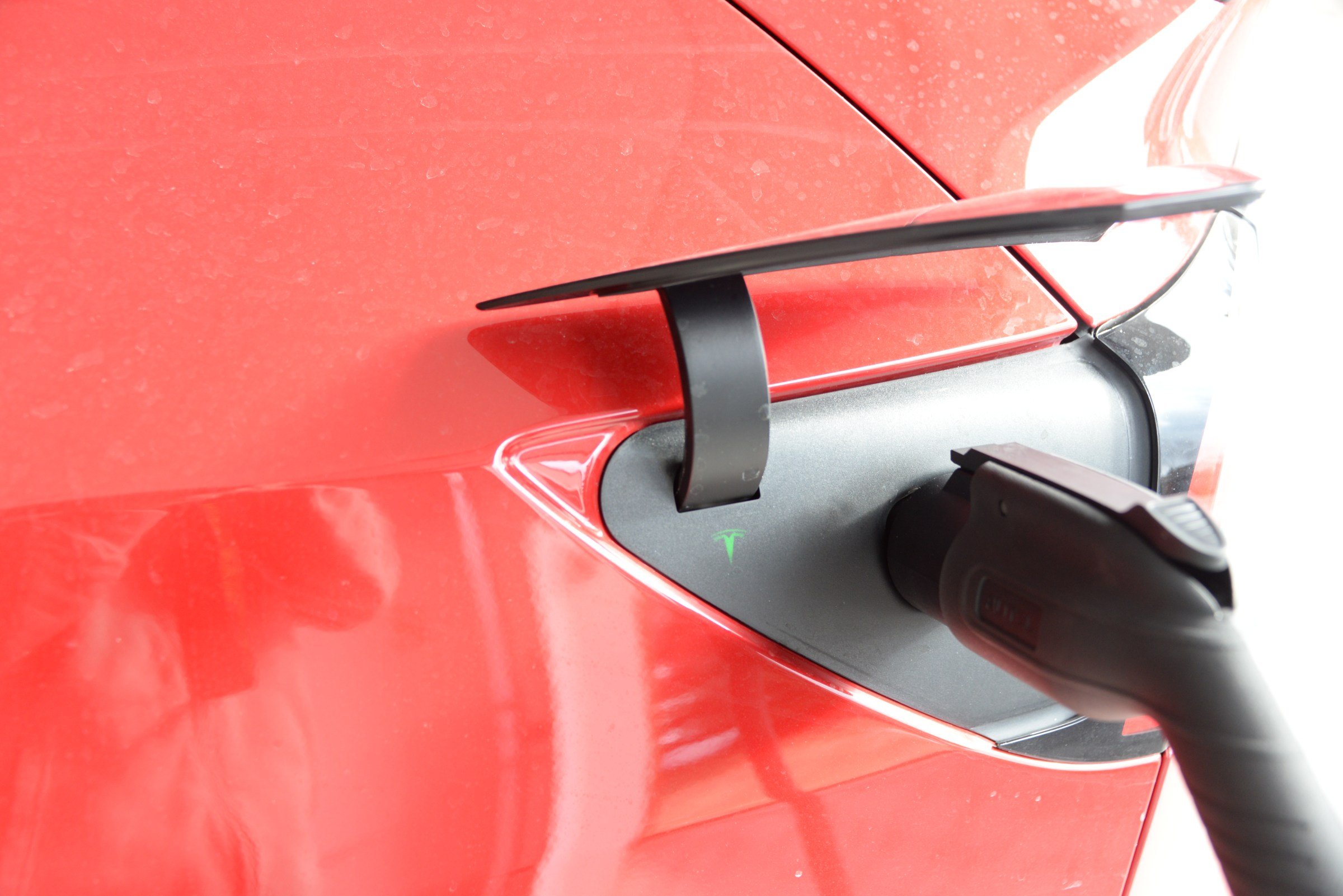
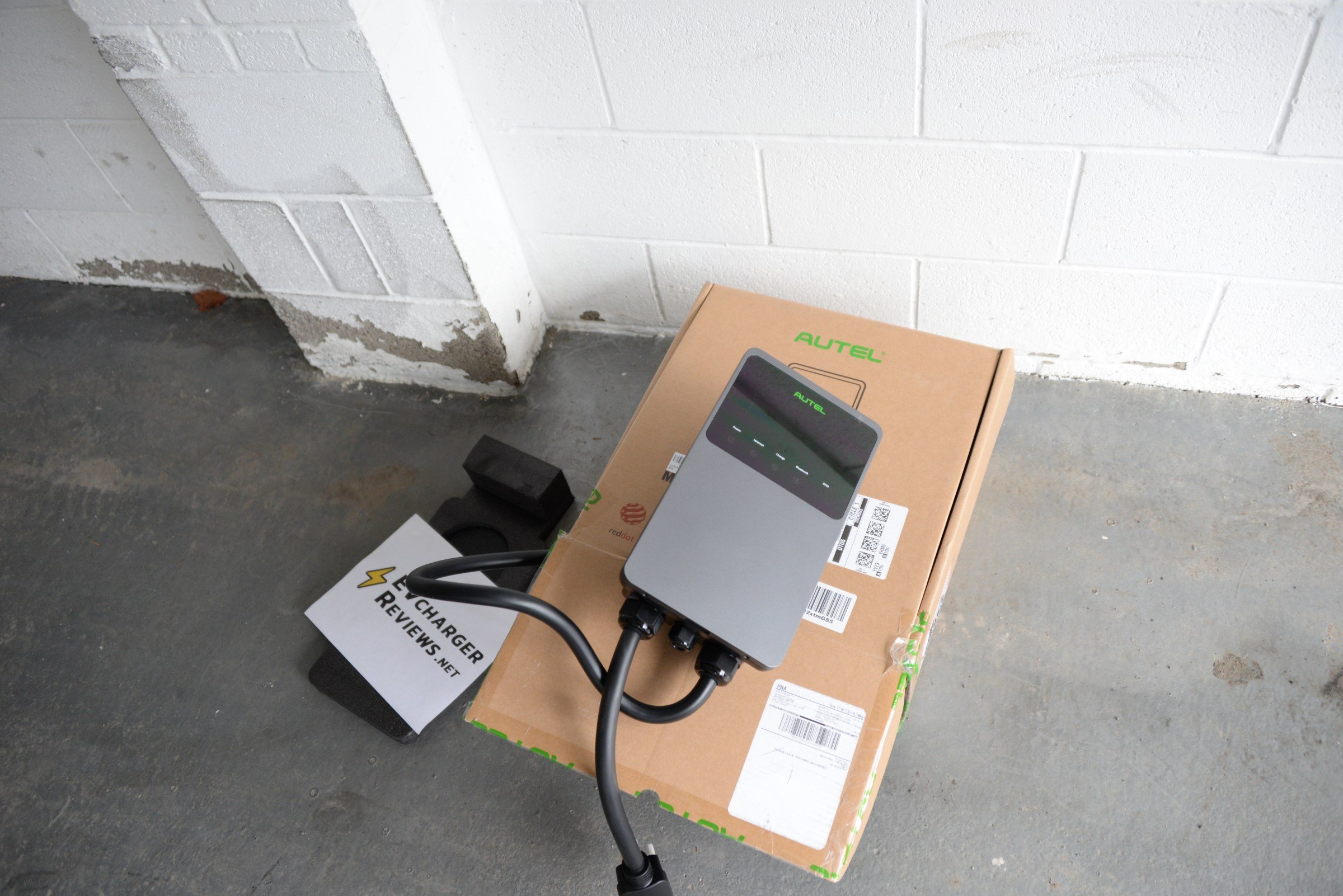
Connectivity and Software
The Autel MaxiCharger includes both Bluetooth and Wi-Fi connectivity. When turning on the charging station for the first time, the mobile app will attempt to pair with the MaxiCharger over Bluetooth in over to connect the charger to your home Wi-Fi network. After the initial setup, the MaxiCharger will mostly connect to Autel’s infrastructure over Wi-Fi, and this allows remote management using the mobile application. A user account with Autel is required for this functionality.
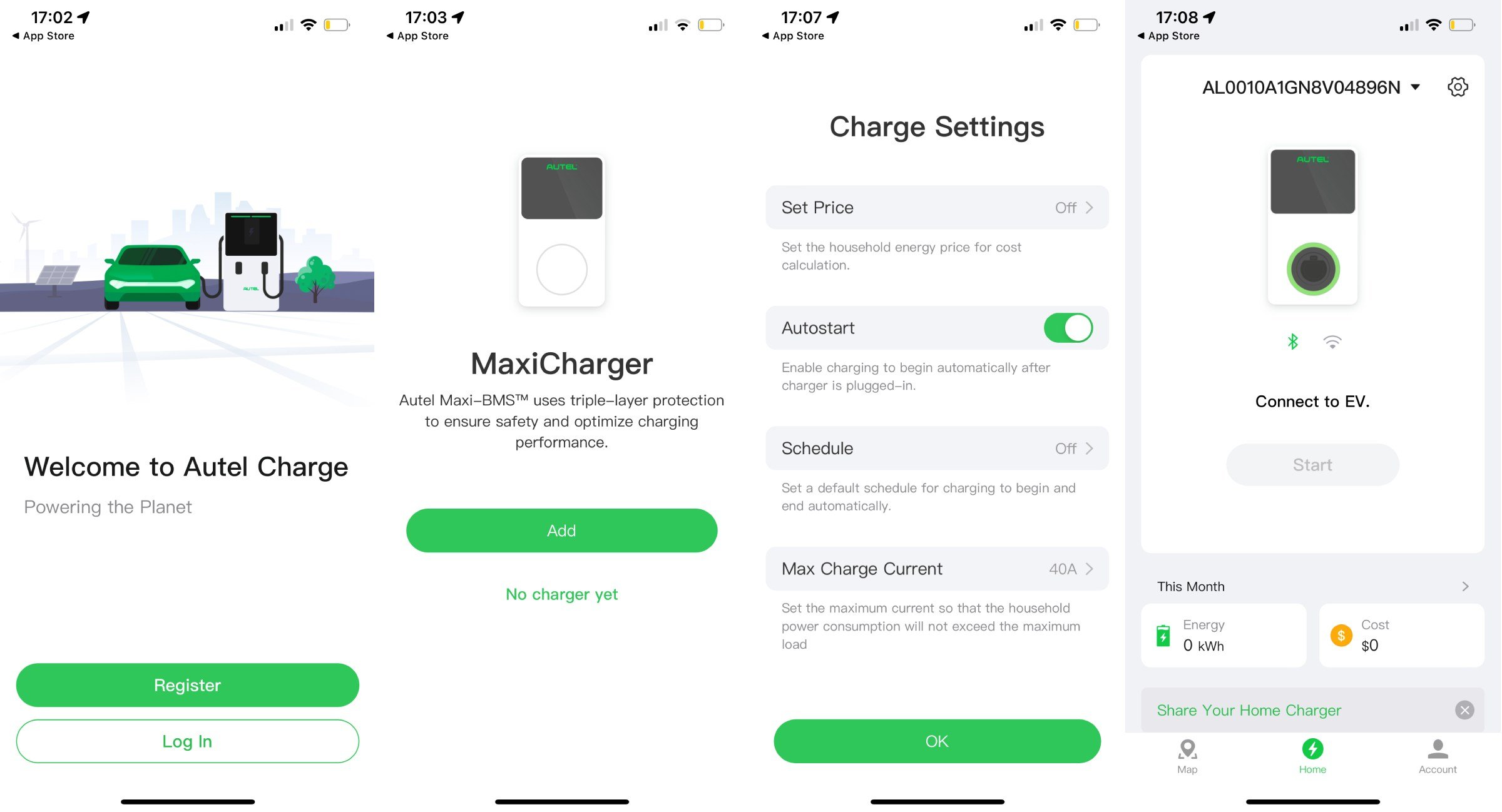
For a relative newcomer to the EV charging space, Autel’s app has a high degree of polish and functionality. We were impressed with the ease of setup and day-to-day usability.
The app allows the user to control the maximum output of the charger between 6 and 40 amps (50 on hardwired units). This flexibility is especially important for homes with less powerful circuit breakers.
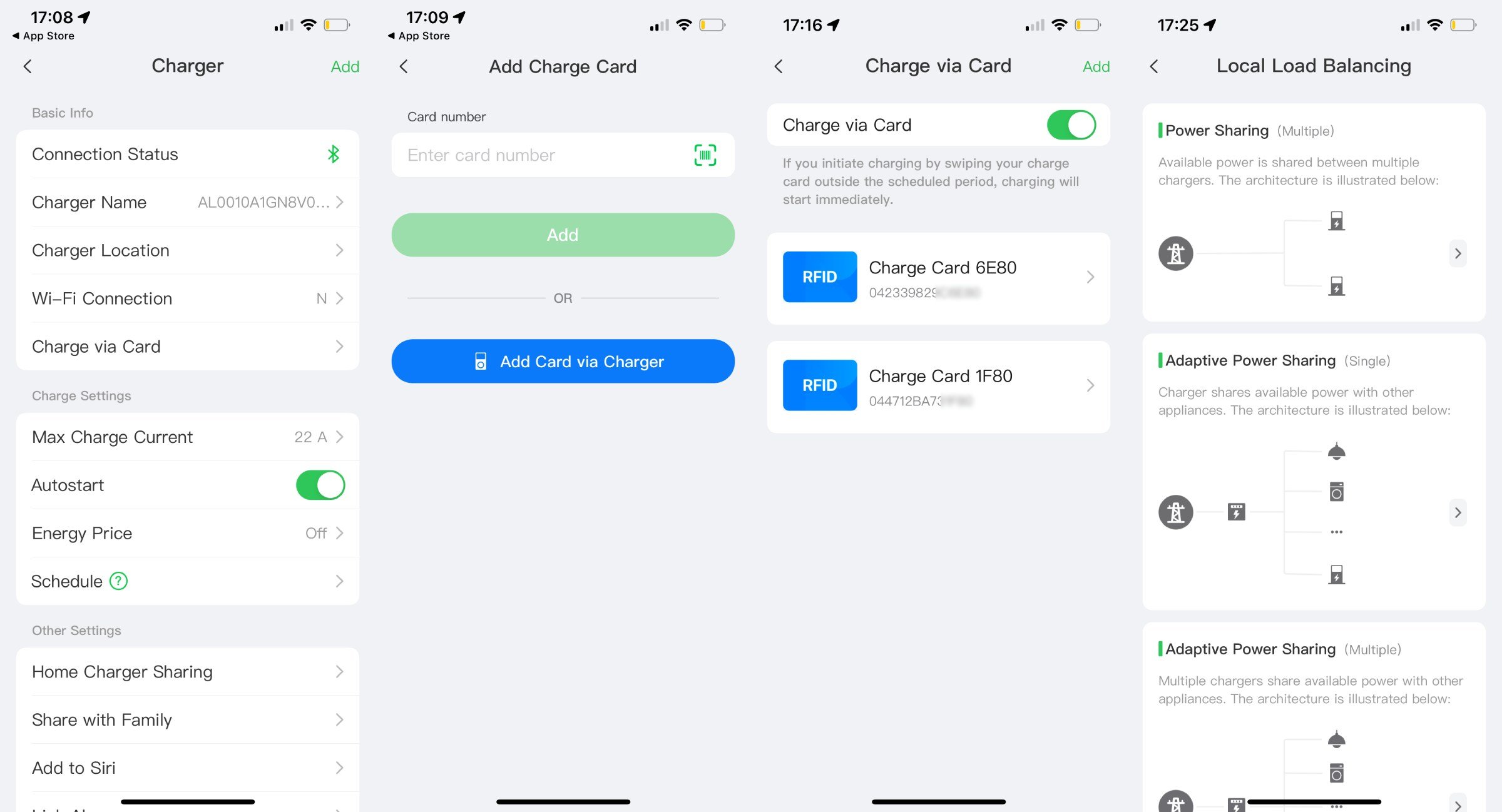
By default, the MaxiCharger will begin charging the EV when plugged in. However, “Autostart” can be disabled in favor of a manual start (using the app) or an RFID card key. The interface for managing and adding key cards is very intuitive and involves scanning the card on the reader for pairing. As we mentioned earlier, Tesla drivers can use their car key cards as charging cards.
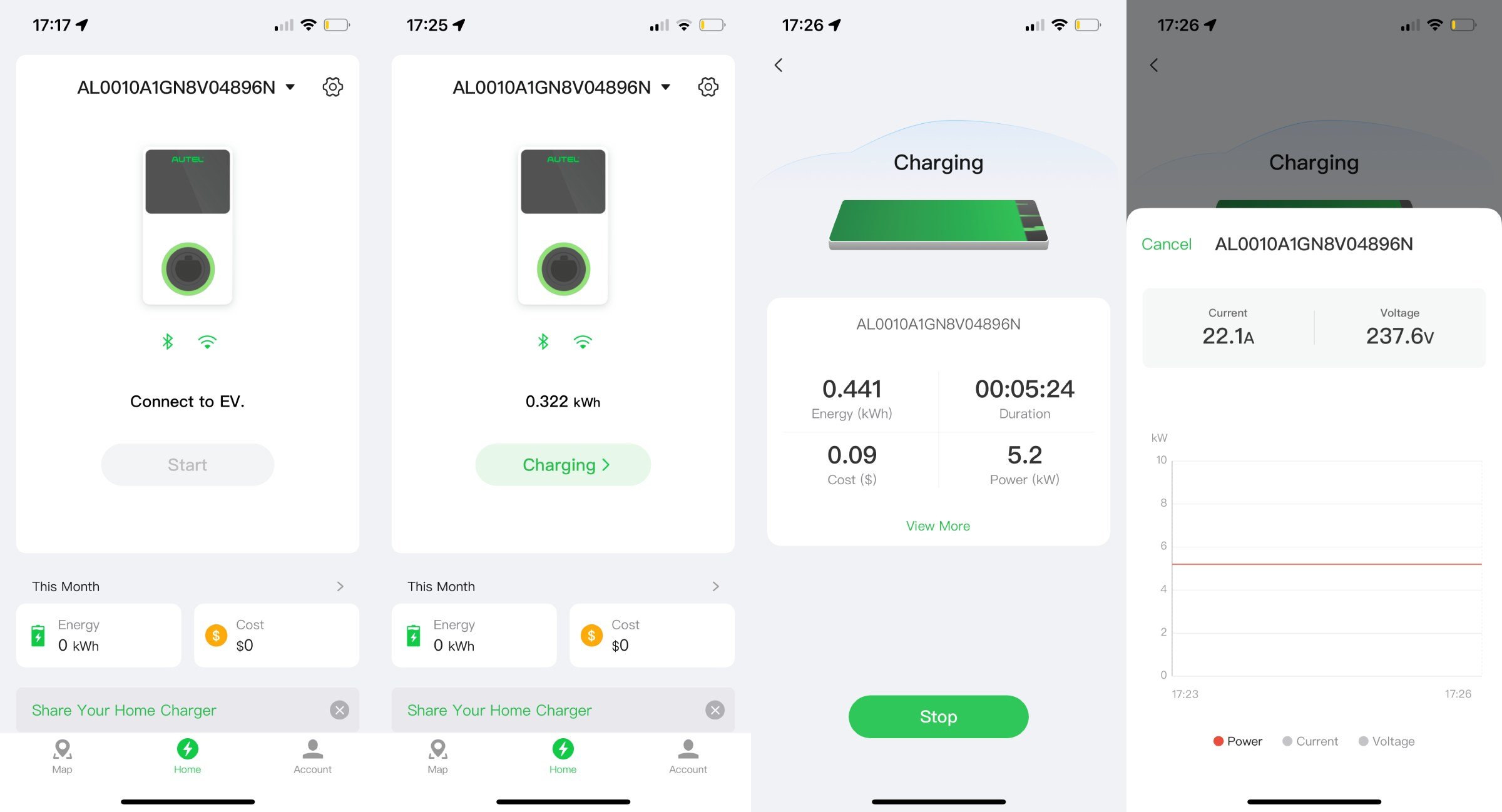
Energy costs can be manually configured in the app for charging cost estimation. Once we had entered all of our Information into the app, it was a fairly smooth experience for monitoring charging performance and cost.
The main charging screen has a clean charging animation of a battery filling up. However, it must be noted that this is just an animation and not a state of charge indicator. Due to how the J1772 plug and standard operate, the charging station actually does not know how much charge is inside the EV battery. This is no fault of the product, and it is common to all level 2 chargers. Only Level 3 DC chargers are able to read the battery percentage from the EV.
Charging schedules work as expected and allow the user to specify when charging begins and stops, according to their own local energy time of use (TOU) rates. But this must be manually configured. Also, separate schedules for weekdays and weekends are supported, but a seven-day schedule would have been even more flexible.
Unlike many competing products, we did not see any mention of charging station temperature inside the app. This is something we like to watch out of curiosity, but it’s not of interest to regular users. In our own testing during hot summer weather, the unit did not get too hot after long 40-amp charging sessions.
Conclusion
The Autel MaxiCharger is a mid-tier product when it comes to pricing, but it offers some premium features, solid construction, and an intuitive mobile app. The product is backed by a three-year warranty and users are reporting good levels of customer support. Our only hesitations are with a stiffer cord than competing products, and we wished for more flexible app scheduling options.
Shopping Options
Full Review Gallery
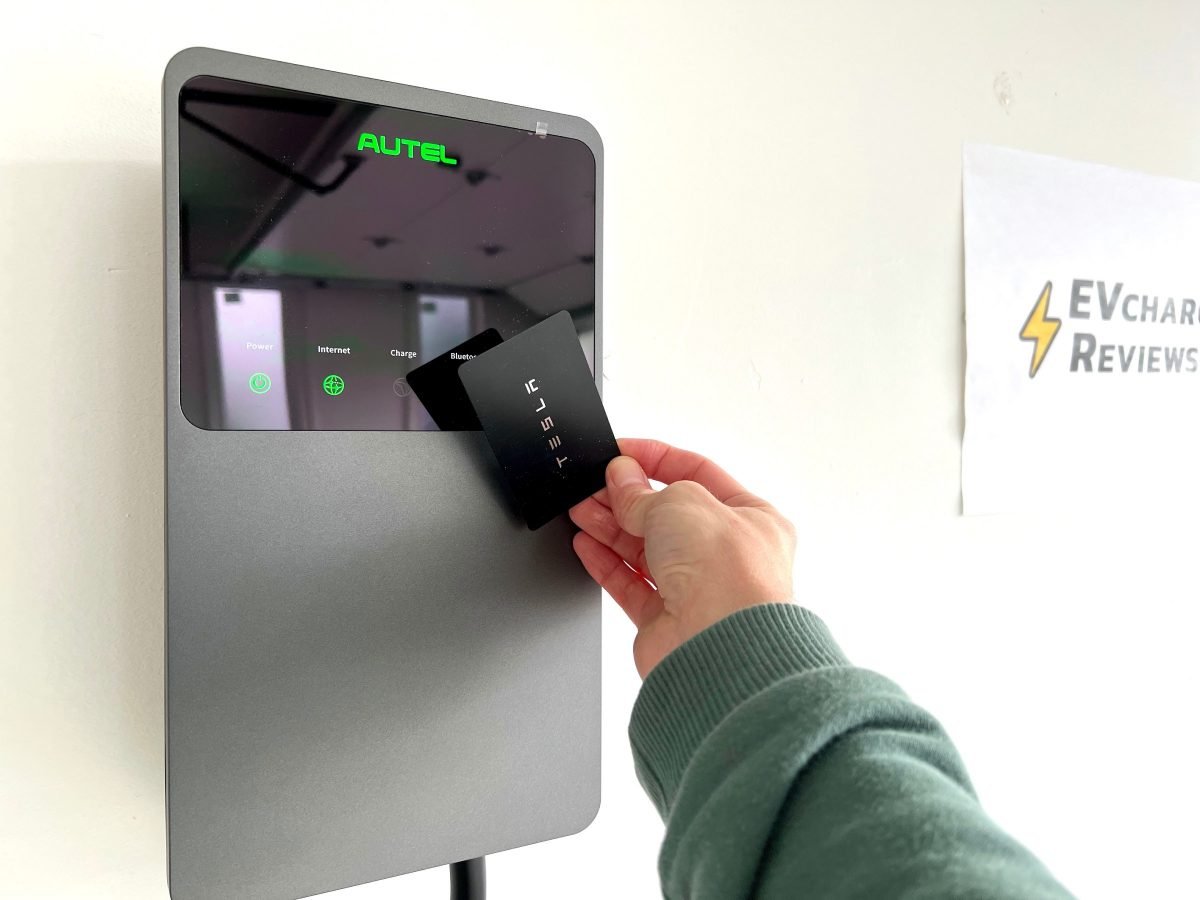
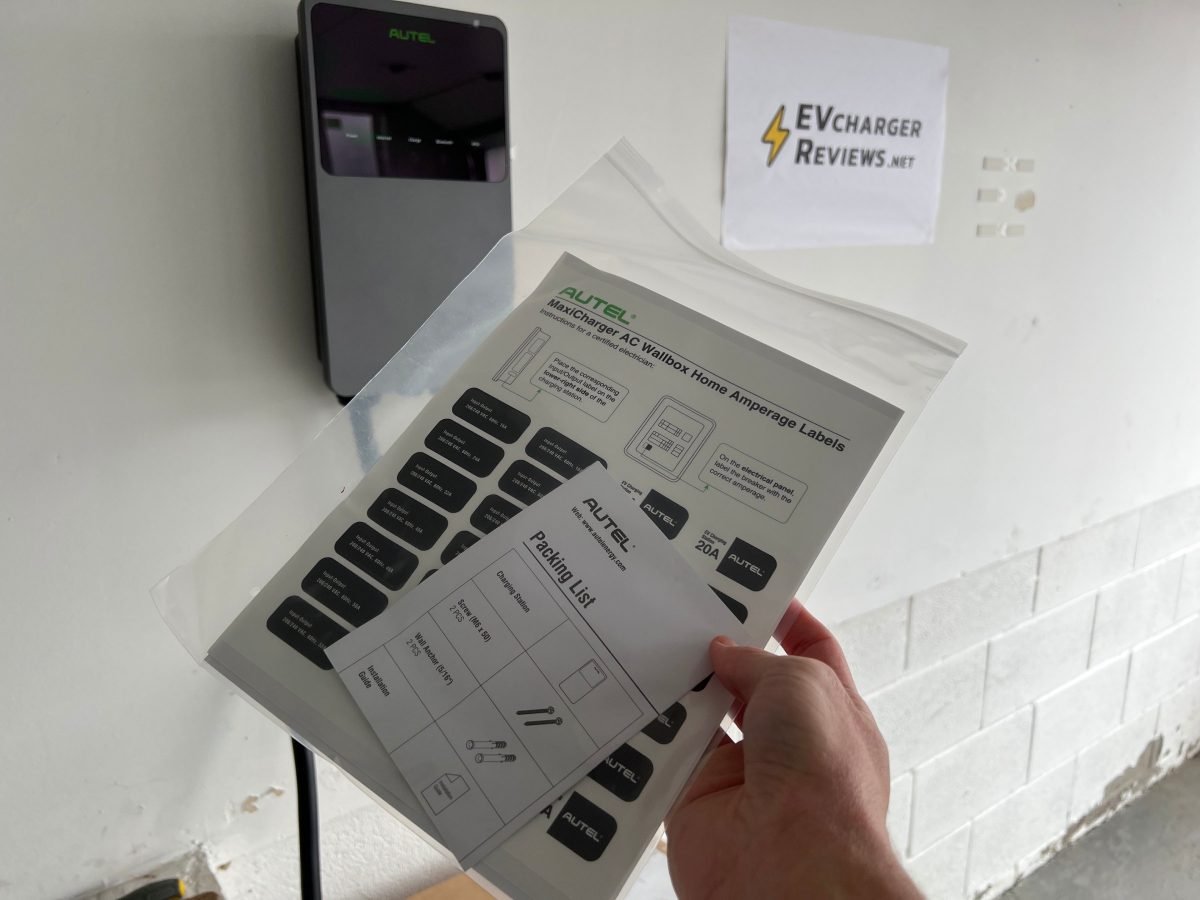
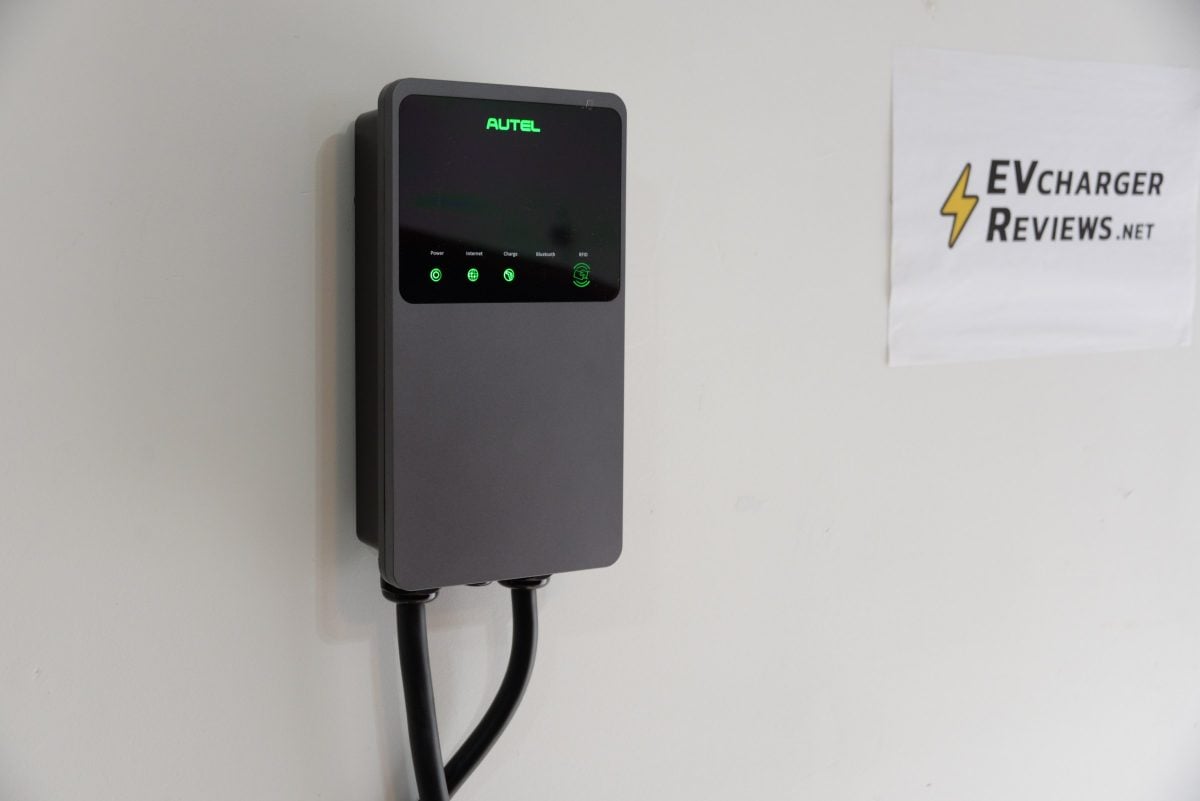
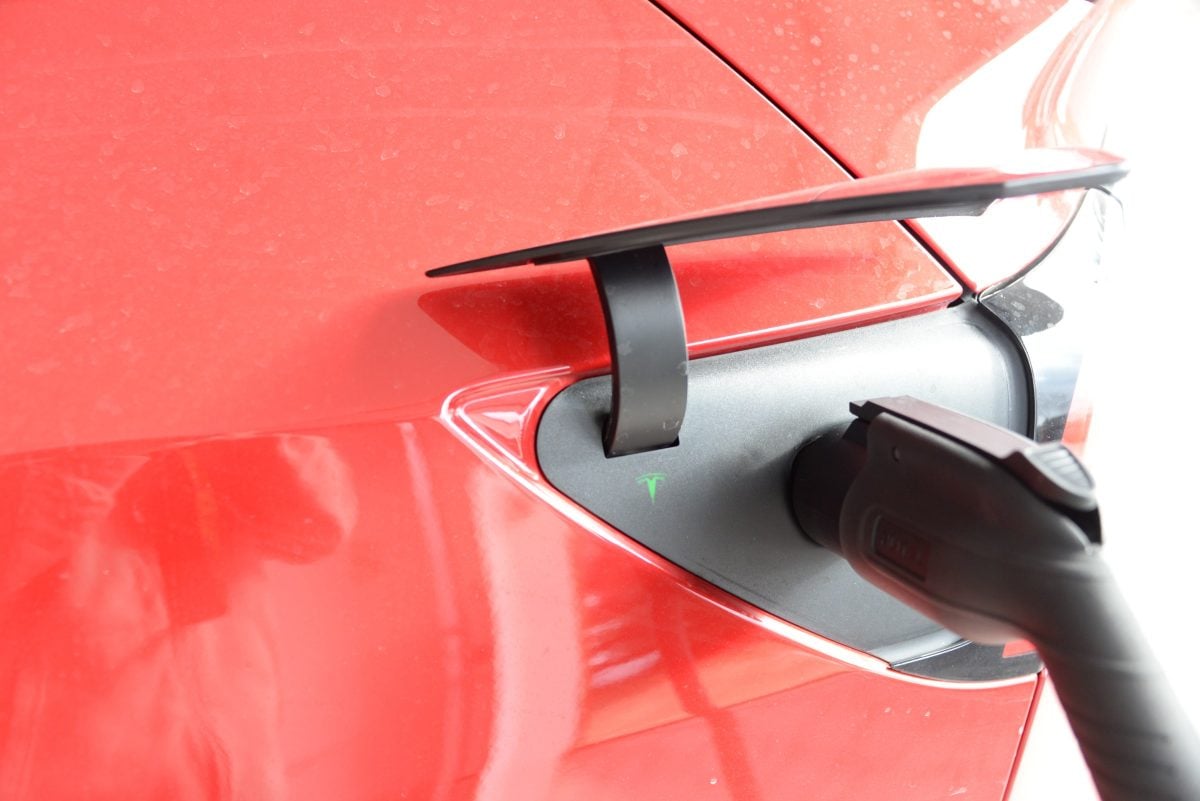
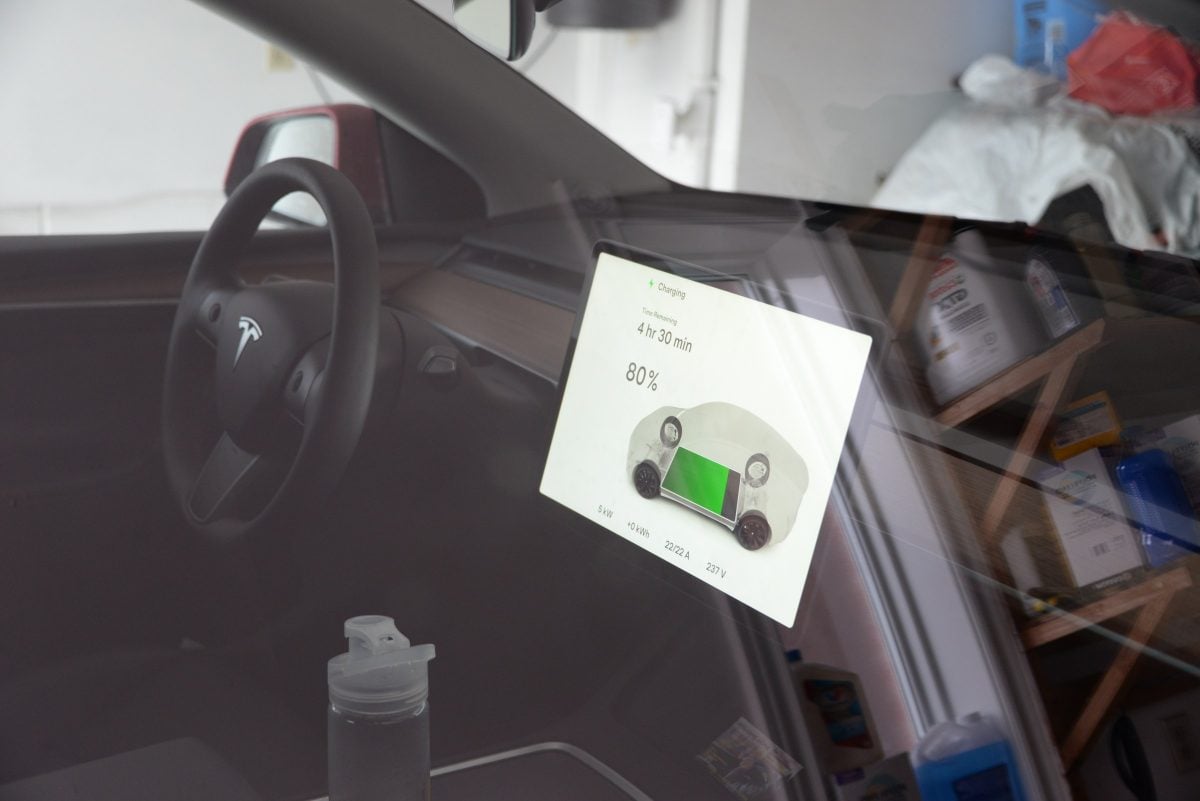
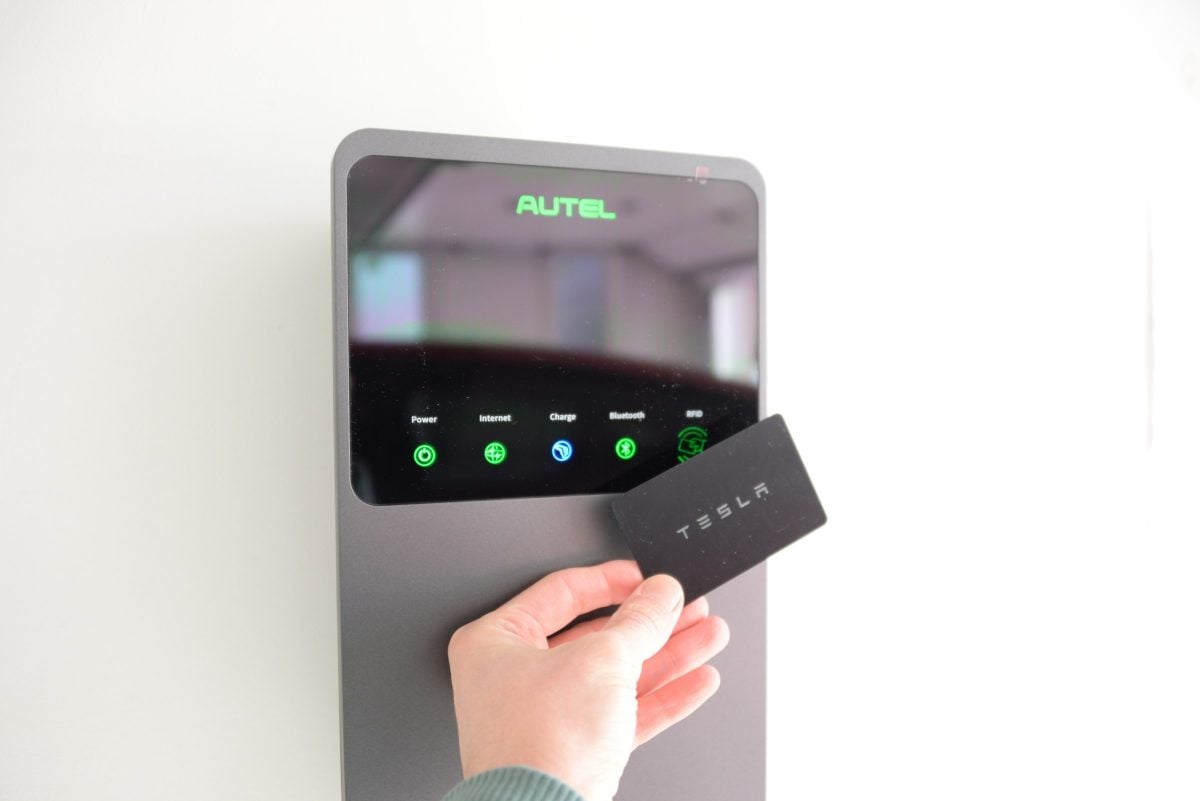
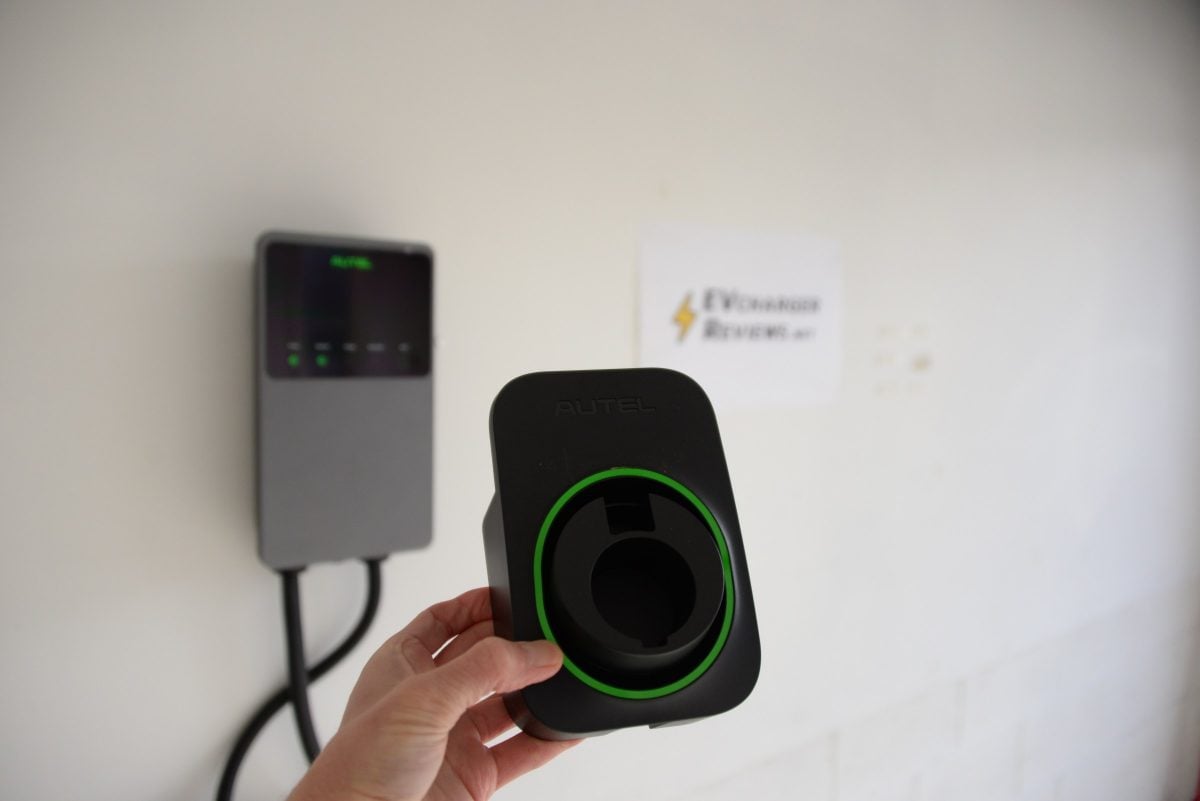
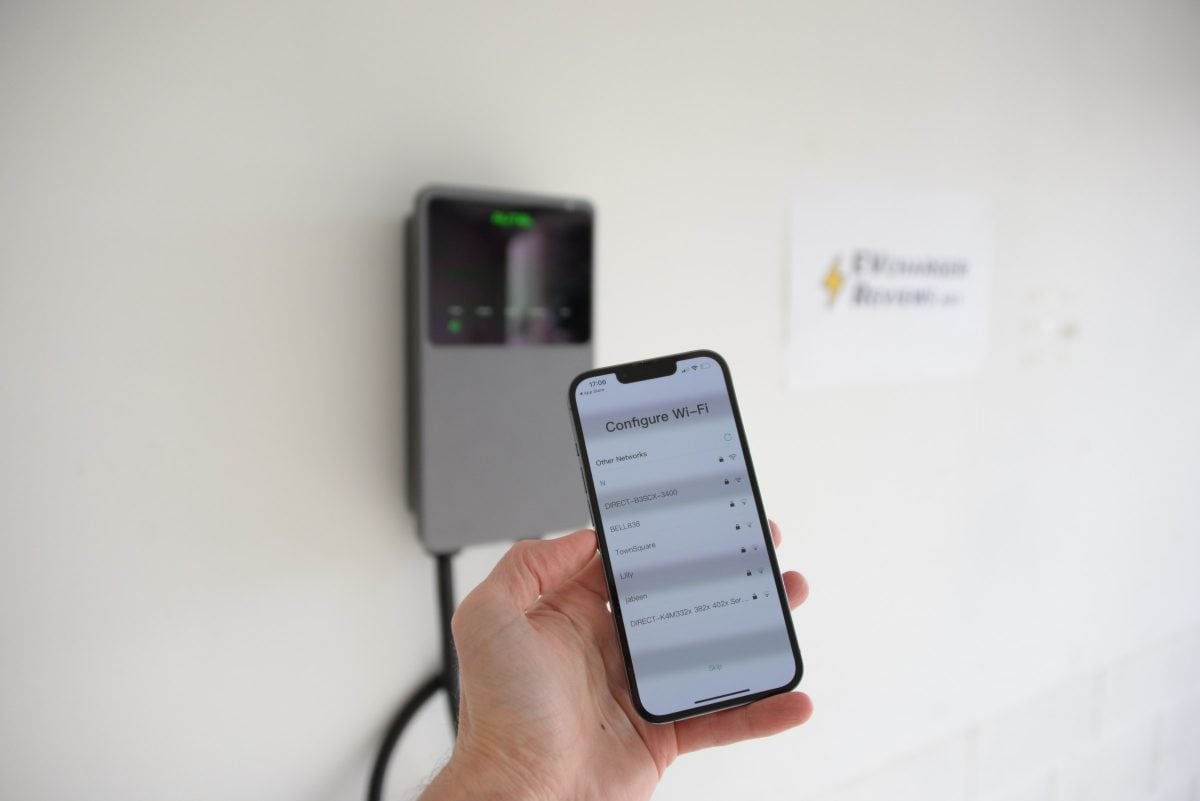
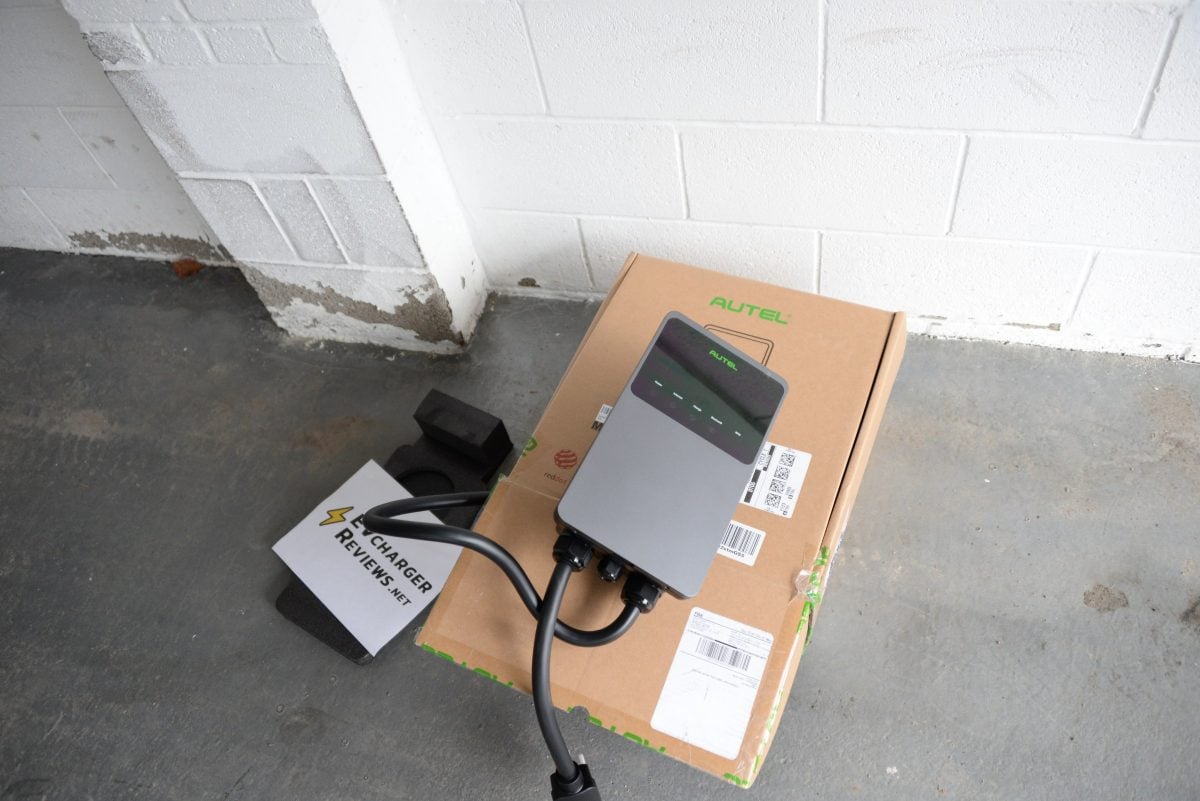
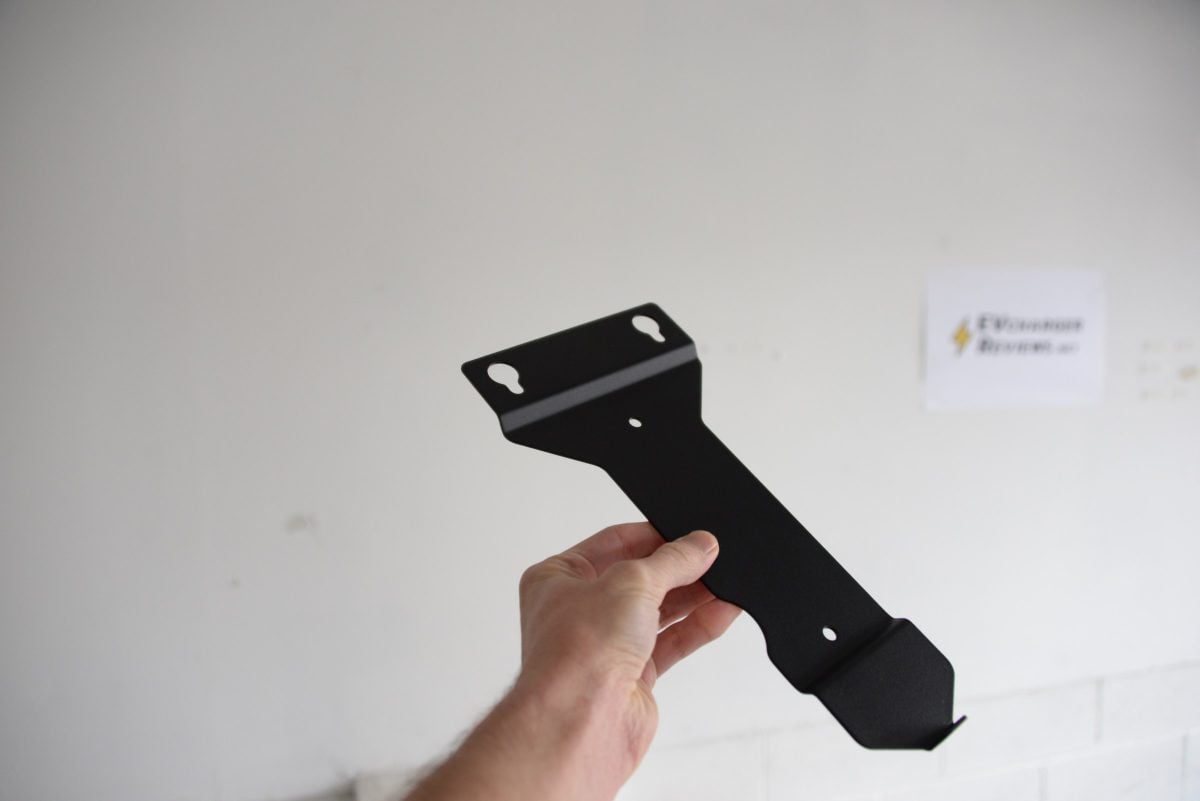
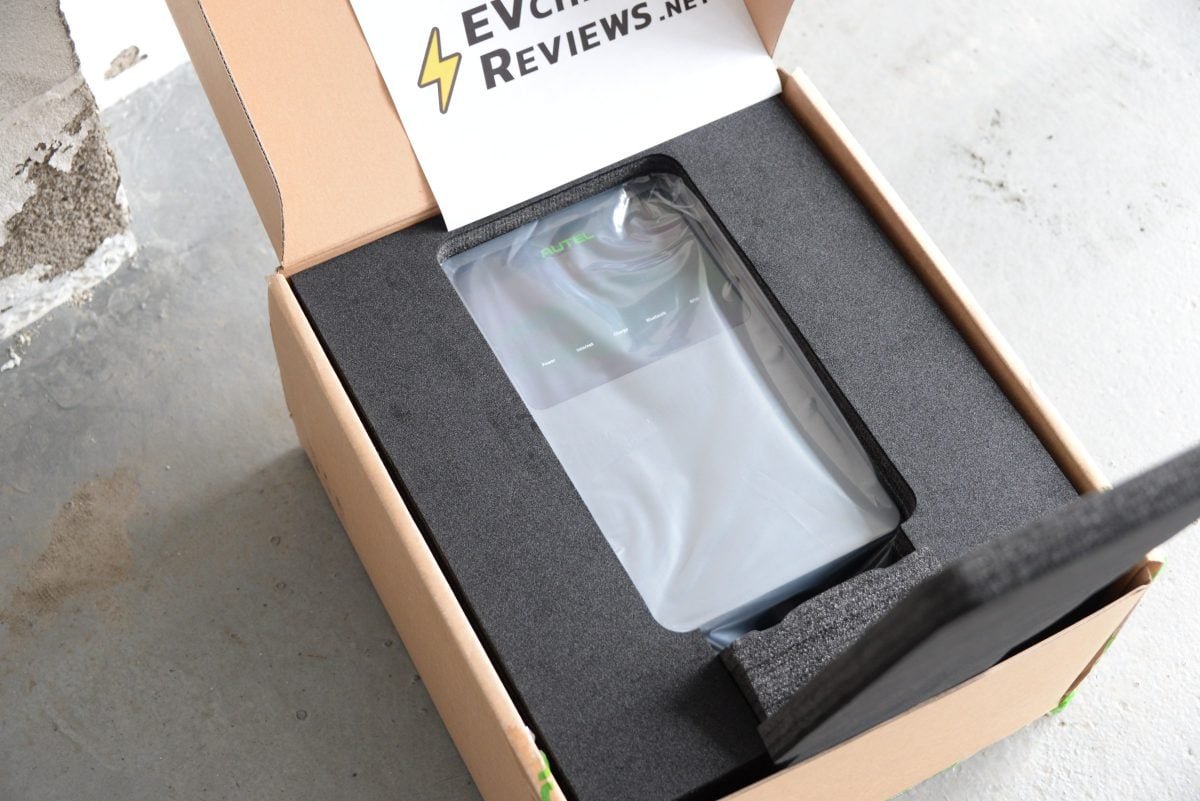
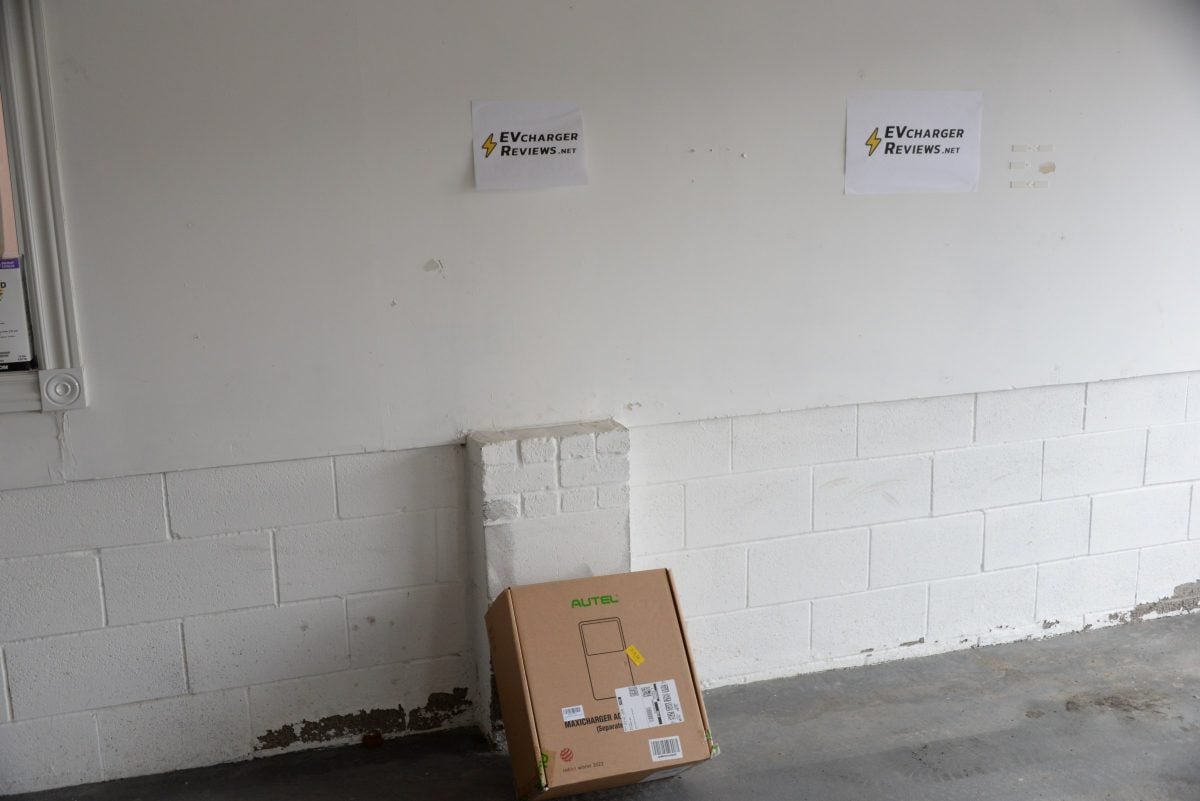
EVchargerReviews.net EVSE Review Methodology
We get the product into our facility, unbox it, inspect it, and install it just like the end user. We have a two-EV car garage with many electric miles accumulating weekly. We take EVSEs through a suite of tests, from short charging sessions, to long overnight charging sessions. We look at whether the claimed features work as expected. We check performance under challenging conditions; does the cord hold up to cold weather? Does the charging station throttle down amps due to heat and thermals? Does the Wi-Fi or Bluetooth drop the connection? Software bugs and glitches will surface during longer-term testing rather than a one-day trial. Measurements are taken on cord thickness and performance, and a thermal camera is used to look for surface hot spots after a 50 kWh stress test.
After living with the charging station product for at least two weeks, we are able to determine how the product compares to rivals, and if it deserves to be recommended to our readers.
Disclosure: Independent review by Michael Kim from EVchargerReviews.net. Our review unit was purchased from Amazon. We participate in affiliate programs, and we may earn income when you use our links. We hope you think that is fair, based on the amount of work that goes into our reviews.
Considering buying a Tesla? Use our referral link to get $1,000 off, and help support our content.